Mercury
Latest
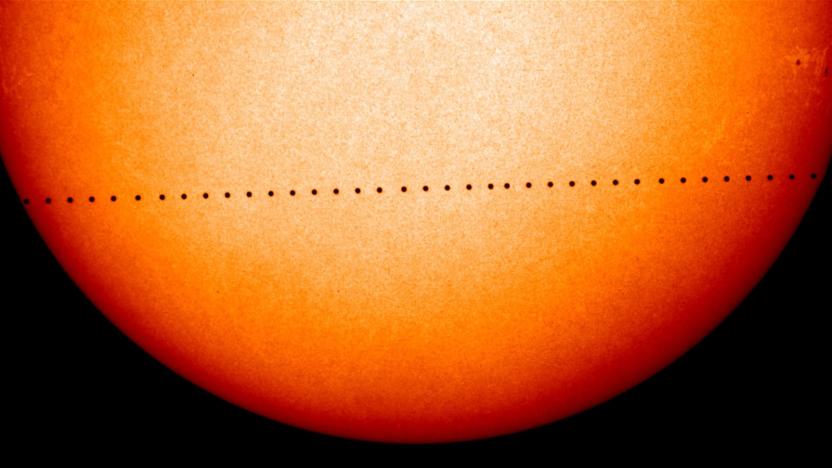
How to safely watch Mercury pass in front of the Sun today
Mercury is about to take a rare trip between the Sun and the Earth, giving viewers around the world a rare and dramatic glimpse of the solar system's innermost planet. The transit will take about five and half hours and start at around 7:35 AM ET, according to NASA. If you've always wanted to see the phenomenon, now's the time, as it won't happen again until 2032 -- and won't be seen again in North and South America until 2049.

BepiColombo orbiters take off for Mercury tonight
If you've ever wondered what's happening over on Mercury, you'll have an answer soon. Well, soon-ish. BepiColombo, a joint effort between the space agencies of Europe and Japan, will send off a spacecraft Friday night at about 9:45 PM ET with the destination set for the closest rock to the sun. Don't expect to hear much from the little adventurer for a while, though -- it won't reach Mercury's orbit until late 2025.

How NASA will defend the Earth against plagues from outer space
In the summer of 1957, the Earth stood witness as a meteorite cratered in rural Pennsylvania, bringing with it a people-eating plague never seen: an alien amoeba with the taste for human flesh. While we had Steve McQueen around for the first invasion, humanity is now defended against microbial marauders from outer space by NASA and its international counterparts.
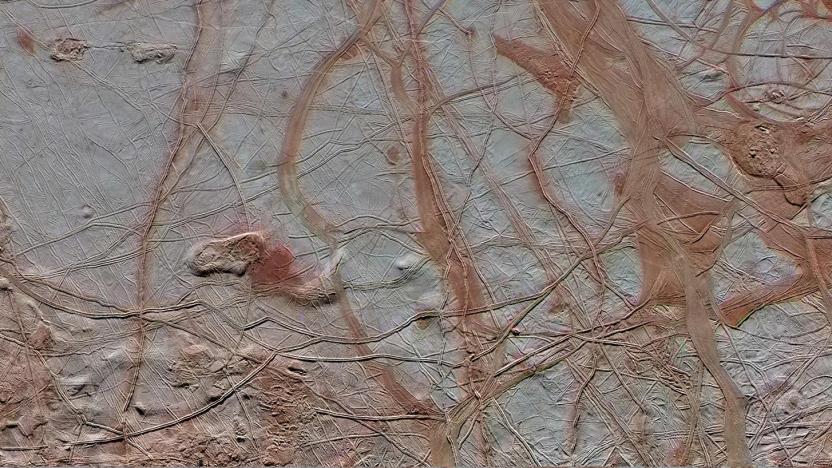
Touring the solar system with a new book of NASA photos
It's easy to get jaded by images of our solar system, especially when NASA probes like Cassini make it look so routine. A new book called The Planets, written and curated by Nirmala Nataraj with a forward by Bill Nye and featuring hundreds of stunning NASA images, should cure you of your cynicism. As Nye puts it, we haven't exactly been doing this for a long time. "You are looking at images with a clarity and sharpness that our ancestors probably couldn't even imagine, let alone capture," he said.

Solar eclipse gives NASA a rare opportunity to study Mercury
While you're stuck on Earth during today's solar eclipse, NASA jets will be performing a tricky science experiment on the Sun and its closest companion, Mercury. A pair of them will take off this morning from Houston's Johnson Space Center and follow the path of of the eclipse, allowing them to see "totality" for three and half minutes, nearly a minute longer than Earth observers. Equipped with a pair of infrared telescopes each, they'll examine the sun's corona and Mercury's chemical signatures to find out what lies below its surface.

BlackBerry's KEYone is an exciting return to form
With a global launch in the works and the hopes of diehards at an all-time high, the pressure was on BlackBerry and TCL to deliver on all that Mercury hype. We can't render an official verdict yet, but my gut tells me they're onto something. Say hello to the BlackBerry KEYone. Yes, "Mercury" was a better name, and yes, the capitalization is weirding me out too. No matter: Despite the nature of its creation, the KEYone feels like a pretty triumphant return to form for a brand in need of a boost.

BlackBerry's 'Mercury' phone is now the KEYone
What was once known as the BlackBerry "Mercury" is now the KEYone. (Yeah, I don't like the name either.) At a press conference in Barcelona, TCL -- the new steward of BlackBerry's hardware efforts -- introduced, or rather re-introduced, its first Android handset with a QWERTY keyboard. It's a tall, enterprise-friendly smartphone with BlackBerry's DTEK software dumped on top of the OS. You can expect a fairly clean version of Android, but with the BlackBerry Hub and a few other apps aimed at business types. Clearly, this is a niche device: Unlike the DTEK50 and DTEK60, which ditched the physical keyboard, this is a phone for the BlackBerry purists.
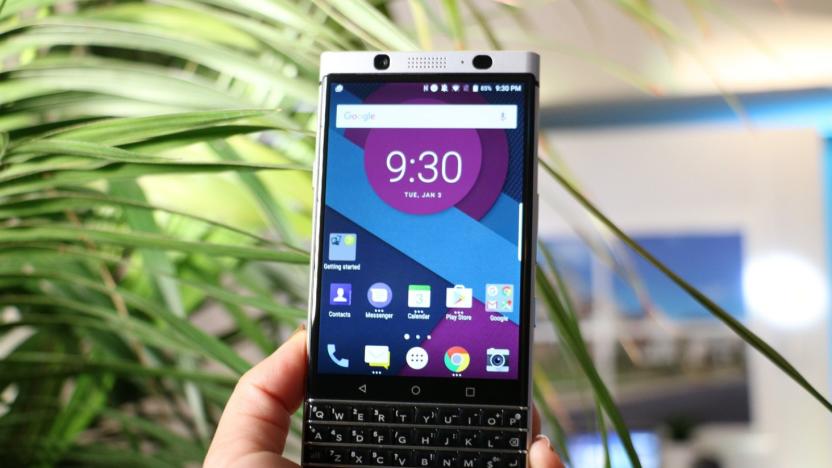
Get your BlackBerry MWC 2017 liveblog right here
It's February, which can mean only one thing: the MWC tanks are rolling into Barcelona. We're expecting to see a lot of new phones and tablets. The fun starts later today, with BlackBerry hosting a press conference, where we're expecting to see the final reveal of the "Mercury" phone we saw back at CES. There could be a few more surprises along the way, so be sure to tune in right here at 1PM ET.

BlackBerry will launch its 'Mercury' phone on February 25th
When BlackBerry and TCL unveiled their "Mercury" phone at CES, it was really more of a proof of life than anything. The two wouldn't shed light on the keyboard-toting Android device's core specs, let alone when you could buy one for yourself. You won't be left speculating for much longer, though: BlackBerry has confirmed that it'll formally unveil the device (presumably, including its final name) on February 25th, right before Mobile World Congress kicks off in Barcelona. Neither BlackBerry nor TCL is providing clues, although there have been some hints of what to expect.

BlackBerry's 'Mercury' prototype makes a cameo on our CES stage
We knew a new BlackBerry was coming, and we were even pretty sure it would have one of those classic physical keyboards. Sure enough, when official word of the BlackBerry "Mercury" prototype dropped during the show, people nostalgic for the smartphone company's golden years swooned. But how did this happen? What did TCL, the company now in charge of making BlackBerry hardware, get right? And more importantly, when will TCL and BlackBerry let slip all of the really juicy details? Jason Gerdon, senior manager of communications for TCL America, joined us on the Engadget CES stage to take us through it all, and we've put together a quick little primer to sum up what we've learned.
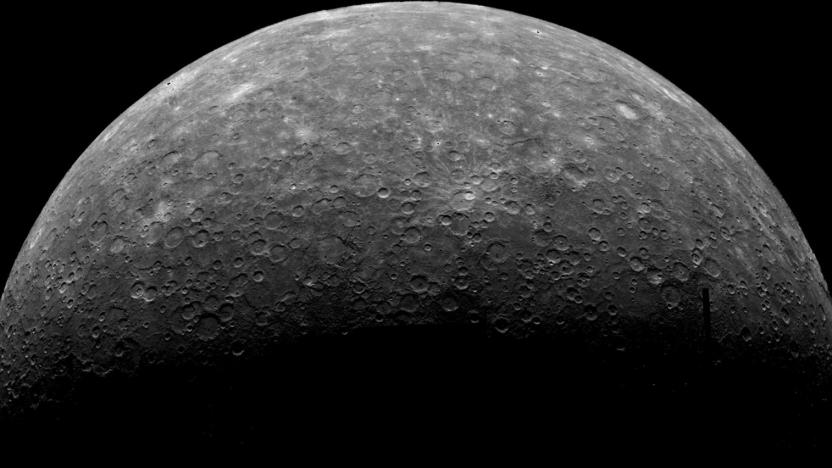
Mercury is the first planet after Earth with tectonic activity
To date, Earth has been the only planet in the Solar System known to demonstrate tectonic activity. Other planets are geologically active, but not much more than that. However, it now looks like our homeworld isn't alone. Smithsonian researchers combing through high-resolution images from NASA's Messenger spacecraft have determined that Mercury is still tectonically active. The team spotted many relatively young fault scarps (surface offsets), which are strong indicators that the minuscule planet's crust is still shrinking as the core cools down. As Gizmodo notes, common wisdom previously dictated that Mercury's interior would have settled down billions of years ago.

Queen's 'Bohemian Rhapsody' is now a virtual reality music video
We've all heard the dramatic faux-opera that is Queen's Bohemian Rhapsody -- but have you ever wondered what a song like that might look like? The folks at Google did. In a new collaboration with Queen and Enosis VR, artists and developers at Google have created The Bohemian Rhapsody Experience -- a virtual reality experiment created to take viewers on "a journey through frontman Freddie Mercury's subconscious mind." That's a fancy way of saying they turned the iconic song into a 360-degree virtual reality music video.

NASA films Mercury crossing the sun's surface
You don't have to wait for years to watch Mercury crossing the sun if you missed NASA's livestream earlier. The agency's Solar Dynamics Observatory has captured the planet's transit across the star's fiery surface on film and has even uploaded a time-lapse video of the images on YouTube. SDO is the same spacecraft NASA launched in 2010 to study the sun's magnetic field. The celestial event occurred on May 9th, from 7:12 AM to 2:42 PM Eastern, and it only happens around 13 times every century.
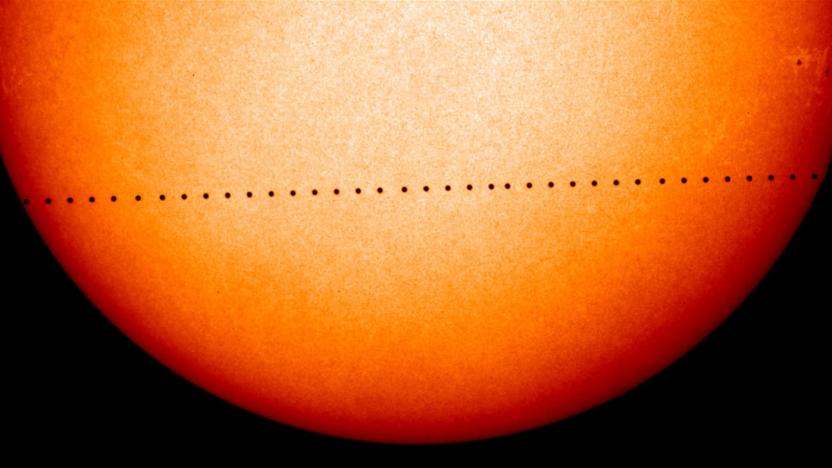
Watch Mercury cross the Sun starting at 7AM Eastern
Mercury might orbit the Sun every 88 days, but seeing it cross in front of the Sun is much rarer. That only happens roughly 13 times each century, and the technology to safely watch this happen hasn't been widely available until recently. However, you're in for a treat this time around. Mercury is poised to transit across the Sun on May 9th starting at about 7:12AM Eastern, and numerous sites (including NASA and Slooh) are offering live footage of the crossing until it finishes at around 2:42PM. Given that you probably don't have a telescope and the solar filter needed to protect your eyes, this is likely the best way to watch.
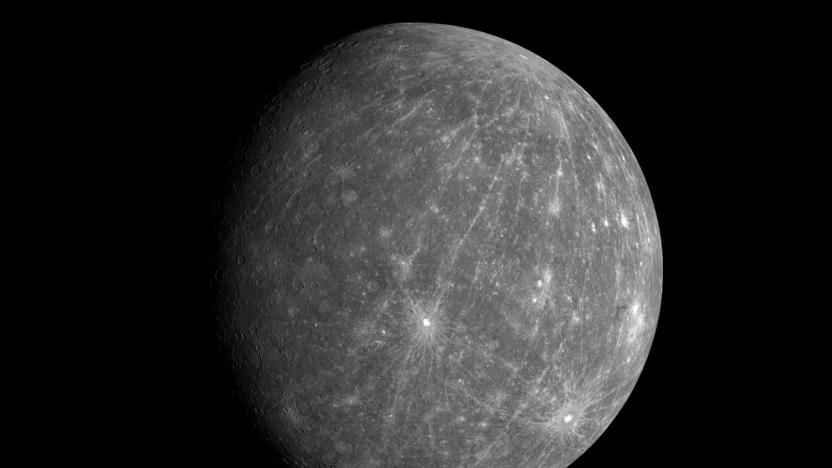
Here's why the surface of Mercury is so dark
For years, scientists have wondered why Mercury is so dark. It doesn't have as much iron and titanium as the Moon, so it should be brighter. A team at Johns Hopkins' Applied Physics Laboratory finally has the answer, though. Thanks to a spectral analysis of color images from NASA's Messenger probe, they've determined that carbon (specifically, graphite) is the probable culprit behind Mercury's dim look. Most likely, what you're seeing is the aftermath of the tiny planet growing up. As the young Mercury's magma ocean cooled 4.6 billion years ago, the graphite would have floated to the top and formed the original crust -- there just happens to be enough of it left to affect visibility.

NASA's Messenger probe will crash into Mercury at 3:30pm ET today (update: it's done)
It's been a long and hard road for NASA's Messenger Probe as it studied the surface of Mercury for the last four years. That journey, however, will come to an end today, after NASA announced that the craft will crash land into the planet at around 3:30pm ET today. The vehicle was the first that managed to make it to Mercury, and has been in service for more than a decade -- far longer than administrators had ever expected it to last. In fact, the project was only meant to last for a year, but canny fuel-saving measures managed to quadruple its lifespan.

Messenger spacecraft to crash into Mercury after studying it for years
The spacecraft that captured the first photos of ice on Mercury is bidding us all farewell on April 30th. NASA's MErcury Surface, Space ENvironment, GEochemistry and Ranging (Messenger) spacecraft is almost out of propellant after spending over six-and-a-half years traveling to the planet and four orbiting and studying it. The agency sent Messenger to space aboard a Delta II rocket in 2004 in its quest to know more about the first rock from the sun. It ended up providing evidence that there's ice and organic matter hiding in the planet's craters, as well as data showing that all the ice in Mercury's polar regions would be around two miles thick if spread all over Washington.

Hear the space age unfold on NASA's historic SoundCloud account
If you've ever wanted to cobble together a really wicked EDM track comprised mostly of sound bites from NASA's Mercury missions, well, now's your chance. Everyone's favorite beleaguered space agency has been posting a treasure trove of audio clips that span the space age to its SoundCloud account (just in time to post them in form of Twitter's new Audio Cards), and they're really worth a listen.

NASA's Messenger captures first photos of ice on Mercury
It's easy to assume, that finding ice on the first rock from the sun, would be like finding a snowflake in a furnace (it can reach 800 degrees Fahrenheit after all). But, you'd be wrong. And NASA's long had radar and photographic proof (just nothing in the visual range) that water ice did exist on the planet. Now, we have the first optical evidence -- after pictures snapped by the NASA's Messenger spacecraft managed to snag enough sunlight inside the 70 mile-wide, permanently-shadowed Prokofiev crater on the north pole of the planet for a photo. The images might not look like much to the untrained eye (though still wonderfully otherworldly), but they provide those that know with enough information to suggest that the ice deposits are relatively recent (and not from when the planet was being formed). No doubt, more revelations will come as the images get scrutinized fruther, and Messenger continues the good work.

NASA finds new evidence of ice in Mercury's polar craters
While the Mars Curiosity rover has garnered most of our space-gazing attention lately, another of NASA's spacecraft has made quite a momentous discovery on an entirely different planet. The Messenger space probe (which stands for MErcury Surface, Space ENvironment, GEochemistry and Ranging) has found new evidence for ice on Mercury, which is surprising given its proximity to the sun. Thanks to a subtly tilted axis, many of the planet's polar craters never see the light of day, and can dip to temperatures as low as minus 370 Fahrenheit. Indeed, scientists claim there's 100 billion to 1 trillion tons of ice on Mercury -- David Lawrence, a Messenger participating scientist, said that "if spread over an area the size of Washington, D.C., [the ice] would be more than two miles thick." The Messenger, which only started orbiting Mercury last year, helped confirm scientists' conclusions by capturing detailed images of the planet's surface, measuring the craters' reflectivity and utilizing a neutron spectrometer that discovered the presence of excess hydrogen. Scientists even found slightly warmer regions on Mercury that might be temperate enough for, well, a colony: "People joke about it, but it's not so crazy, really," said David A. Paige, a UCLA professor quoted in the New York Times. Of course, this is assuming we don't boil or freeze to death on our way there. For more information about the find, check out the press release below.










